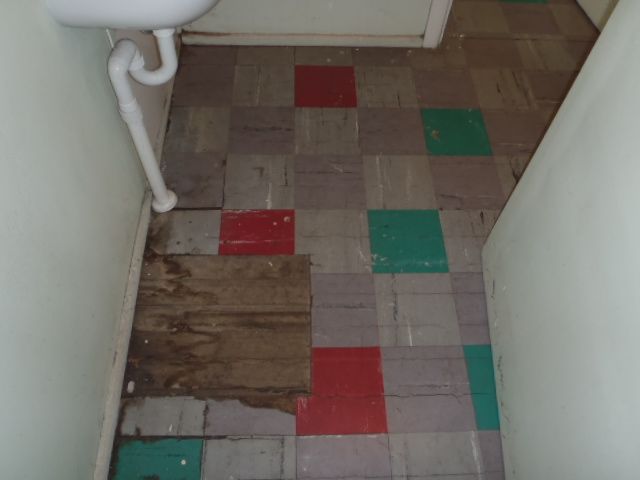
A common household and industrial product which is known to contain asbestos are floor tiles, known as asbestos floor tiles (AFT). They generally contain chrysotile asbestos within a polymer matrix. From a risk point of view these products are often relatively low due to the difficulty in generating airborne fibres from this material. Often, homeowners and workplace managers are unsure if they should leave floor tiles in place (in-situ) or have them removed.
Asbestos floor tiles are generally over 30 years old, however asbestos testing to AS 4964 should be undertaken to determine whether they do actually contain asbestos. Over this time they may have been subjected to daily cleaning, high pedestrian traffic, movement of furniture or damage during renovations. In some cases these activities may be enough to increase the likelihood of airborne asbestos fibres that can be liberated from the material.
A thorough risk assessment should be conducted by a trained risk assessor to determine this risk. High risk results should be addressed as soon as practicable, this may require remediation or removal. Medium risk results need to be addressed, although not as urgently as higher risk items. Whilst low risk materials often only require management.
Safety features other than asbestos should also be considered when deciding to remove or manage asbestos floor tiles. Asbestos floor tiles are commonly seen in wet areas such as the bathroom, laundry or kitchen where water is used, slips and falls are an unavoidable issue. Slip resistance properties of the surface used in such areas plays a vital role in the risk of an incident occurring. The slip resistance properties of asbestos floor tiles are often very low, presenting an increased risk of slip and fall incidents occurring on this flooring product. This is a particular concern for workplaces where slip and fall incidents may result in workplace compensation claims.
As asbestos floor tiles age and are exposed to sunlight or physical force they can become brittle. Whilst the tiles may appear intact it may take very little force to damage a brittle tile. Floor tiles which have appeared to have shattered are an example of this type of damage. Once a brittle tile breaks down you are left with a prominent divot in the ground which creates a trip hazard. In addition small, sometimes sharp, pieces of the floor tile come loose which can be stepped on resulting in pain and injury.
When you are deciding on whether or not to arrange for the removal of an asbestos floor tile material remember to take into account the other safety factors, such as slip resistance, trip hazards and chance of future damage. It is possible that the asbestos may be the least risky aspect of the floor tile. Should you wish to know more regarding floor safety please contact one of our specially trained floor safety consultants in Melbourne or Sydney, or go to www.FloorSlipTest.com.au. Advice on asbestos floor tiles can be obtained by contacting our Hazardous Materials consultants in Melbourne or Sydney to arrange for an asbestos inspection.
Author: Amy Morris

Email: Melbourne@AsbestosTesting.com.au
Amy Morris is a Property Risk Assessor at Safe Environments Victoria with a Bachelor of Science (Forensic Science) and associated Biology major and Forensic Chemistry sub-major. Having worked both nationally and internationally in her field Amy is familiar with current standards and legislation for asbestos and other hazardous substances. Trained under Safe Environments NATA endorsed training program she regularly conducts residential and commercial asbestos inspections and provides consulting services to individuals and companies.

